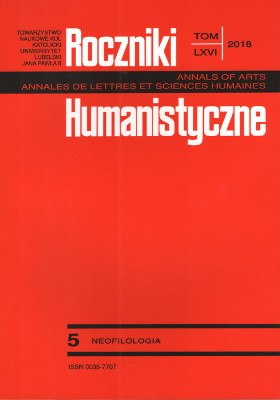Détail, signe, tache: La représentation du corps dans le roman d’Émile Zola
Detail, Sign, Blur: Representation of the Body in Émile Zola’s Novel
Author(s): Jolanta Rachwalska von RejchwaldSubject(s): Language and Literature Studies, Studies of Literature, French Literature
Published by: Towarzystwo Naukowe KUL & Katolicki Uniwersytet Lubelski Jana Pawła II
Keywords: realism; Zola; detail; description; perception
Summary/Abstract: Realistic literature of the nineteenth century, striving to create the most faithful illusion of reality, comes to the limits of mimesis. The detail, which was supposed to build and give credibility to l’effet de réel, because of the excess and grotesqueness of use leading to signifié deterioration, becomes a paradoxical tool, because it undermines the foundation of the aesthetic category of realism. The aim of the article is to show that in Zola's novel, the detail does not devaluate, but on the contrary, it becomes an important element in constructing a network of meanings and a visual and rhythmic counterpoint. The use of the variable scale of perception for portraying the body detracts from the observed details and in a risky manner, for the poetics of realism, pushes the boundaries of the real world towards the invisible. The chromatic aspect of detail of the heroine’s physiognomy (signs) evidenced by Zola, testifies to the writer's intentionally constructing figurativeness into an elaborate constellation of meanings functioning both within the Les Rougon-Macquart cycle and resonating with the iconic context of the era (Courbet's painting Burial in Ornans).
Journal: Roczniki Humanistyczne
- Issue Year: 66/2018
- Issue No: 5
- Page Range: 75-90
- Page Count: 16
- Language: French

